The Great Waltz

Brief Synopsis
Cast & Crew
Julien Duvivier
Luise Rainer
Fernand Gravet
Miliza Korjus
Hugh Herbert
Lionel Atwill
Film Details
Technical Specs

Synopsis
In mid-nineteenth century Vienna, Johann "Schani" Strauss, the son of the well-known waltz composer, whose name he bears, works as a clerk in a bank. Johann also wants to write waltzes and has difficulty concentrating on banking matters. When he is caught composing a tune one day, he is fired, but is happy because he will now have more time to devote to music. Johann's sweetheart, Poldi Vogelhuber, the daughter of a baker, is happy with his decision, and while Johann visits her father's shop, baker Kienzl, who is an amateur musician, suggests that he and other friends help Johann to start an orchestra. A short time later, they get a job at the popular Donmayer's Cafe, but their music does not seem to appeal to Otto Donmayer's patrons. Just as he is about to dismiss Johann, however, Fritz Schiller and Carla Donner, two stars from the Imperial Opera, arrive at the cafe and ask to have the orchestra play for them. Johann plays a new waltz, "Artist's Life," and the cafe is soon crowded with music lovers. Schiller, is impressed with Johann and arranges for him to attend a party at the palace of Count Hohenfried. Carla sings one of Johann's waltzes, which attracts the attention of the music publisher Julius Hofbauer, but Johann is insulted by what he perceives to be both Carla and Hofbauer's interest in him only as an amusement. He storms out of the party and soon marries the devoted Poldi. A short time later, a revolution breaks out and Johann writes a march that becomes the anthem of the revolutionaries. One day, as marchers start to sing the song in the streets, they surround the coach of an aristocrat. Just as violence is about to erupt, Johann notices that Carla is in the coach and rescues her. They then drive through the Vienna Woods and Johann is inspired by the sounds of the forest to compose a tune, which he and Carla joyously sing. They are then caught in a rainstorm and take cover at a small inn where the innkeeper, who thinks that Carla is Johann's wife tells her "it must be wonderful to be the wife of Johann Strauss." After she wistfully agrees, Johann leads the inn's small orchestra in one of his compositions and he and Carla realize that they are in love. Soon Count Hohenfried arrives after looking frantically for Carla and takes her home. The revolution has failed, and Johann returns home to Poldi, but cannot get his mind off Carla. He resolves to leave Vienna and take Poldi with him, but soon Carla tells him that he has been commissioned to write an opera for her. While the opera is being rehearsed, Carla and Johann fall more deeply in love. When the opera opens, the count discovers that Poldi, who has remained silent about Johann's relationship to Carla, has not come to the opening. The count goes to her and urges her to stop the affair before they run off together because he knows that such a relationship will only bring unhappiness to all of them. Poldi then goes to the Imperial Opera House but, when he sees Johann's triumph, she decides to go to Carla to tell her that she is planning to give her husband up because she could not help and inspire him as Carla does. Touched, Carla tells Poldi that she cannot accept her sacrifice and leaves without Johann. In the following decades, Johann becomes world famous and is given every possible honor for his waltzes. Despite his feelings for Carla, he remains with the devoted Poldi.

Director

Julien Duvivier
Cast

Luise Rainer

Fernand Gravet
Miliza Korjus
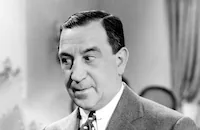
Hugh Herbert

Lionel Atwill

Curt Bois

Leonid Kinskey
Al Shean

Minna Gombell
George Houston
Bert Roach
Greta Meyer
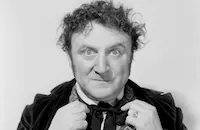
Herman Bing
Alma Kruger

Henry Hull

Sig Rumann
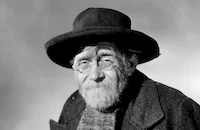
Christian Rub
Ferdinand Munier
Bodil Ann Rosing
Gertrude Sutton
Sue Moore
Mira Mckinney
Lester Sharpe
Hans Joby
Arthur Hamburger
Arno Frey
Loretta Delone
Anthony Marlow
Paul Weigel
Wesley Giraud
Joseph Destefani
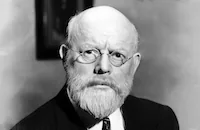
Howard Mitchell
Torben Meyer
Larry Steers
George Ducount
Jane K. Loofbourrow

Phillip Terry
Brent Sargent
Ben Lewis
Luke Cosgrove
Sidney D'albrook
Roland Varno
Frank Mayo
Christian J. Frank
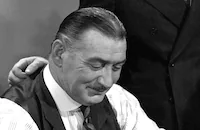
Edward Keane
Boyd Gilbert
Jerry Fletcher

Walter Sande
Harry Von Zynda
John Merton
Max Hoffman Jr.
George Magrill
Albert Mahler
St. Brendan's Boys Choir
William Fraunfelder
Betty Fraunfelder
Ruth Fraunfelder
Crew
Adrian
Vicki Baum
Earl Covert
Victor Fleming
Cedric Gibbons
Robert Golden
Paul Groesse
Sydney Guilaroff
Arthur Gutmann
Oscar Hammerstein Ii
Tom Held
Samuel Hoffenstein
Bernard H. Hyman
Ralph Leon
Paul Marquardt
Robert Mitchell
Alice Mock
Eric North
Albertina Rasch
Gottfried Reinhardt
Walter Reisch
Richard Rosson
Joseph Ruttenberg
Douglas Shearer
Johann Strauss Ii
Dmitri Tiomkin
Dmitri Tiomkin
Edwin B. Willis

Photo Collections
Videos
Movie Clip



Trailer
Film Details
Technical Specs

Award Wins
Best Cinematography
Award Nominations
Best Editing
Best Supporting Actress
Articles
The Great Waltz (1938)
While Frenchman Julien Duvivier received directing credit, one wonders how much control he really had over such a big production, especially since this was his first American film. He had just made two masterpieces of French cinema, Pepe Le Moko (1937) and Un Carnet de Bal (1937) - the latter of which he would soon remake for Alexander Korda as Lydia (1941) - and The Great Waltz doesn't really bear the same personal feel. (Bits and pieces of the movie were even directed, uncredited, by Josef von Sternberg and Victor Fleming.)
New York Times film critic Frank Nugent essentially realized this, too. He wrote of the film: "A stupendous show. Stunning, opulent and melodious. All of which does not prevent it from being a bit of a bore. Metro, of course, makes the most beautiful bores in the world. They are designed by Cedric Gibbons, gowned by Adrian and have dollar signs all over them. No other studio in Hollywood can build such ballrooms and fill them with such lovely, lacy ladies. No other studio makes such enchanting beer-gardens, with the moonlight just right and the dance floor perfection. No other studio can make so big a picture out of so small a script."
Other critics, however, were more positive about The Great Waltz, and the film did well at the box office. It even garnered three Oscar® nominations, for Best Supporting Actress (Miliza Korjus), Best Cinematography (Joseph Ruttenberg) and Best Editing, and it won for Cinematography.
Over a long casting process, MGM considered many possible leading men including Nelson Eddy, Brian Aherne and Fredric March, until Belgian-born Fernand Gravey finally won the part of Strauss. He was billed as "Fernand Gravet" so as to avoid possible ridicule by American audiences. Also cast were recent double Oscar®-winner Luise Rainer and Polish soprano Miliza Korjus, appearing in her only American film. Of Korjus, film critic Nugent wrote that her "resemblance to Mae West and difficulties with the recording in the upper registers tend to offset a lively and full-throated performance."
MGM spared no effort on the music for The Great Waltz. Composer Dimitri Tiomkin adapted Strauss' compositions and conducted them with a 90-piece orchestra. According to studio notes, Dr. Arthur Guttman, conductor of the Johann Strauss Theater in Vienna, was brought to Hollywood to aid in the music's overall authenticity. Even more impressively, fourteen of the violins used in the scoring were Stradivarius models, including one - the so-called "Da Vinci Stradivarius" - which was at the time acclaimed as the world's most valuable violin.
Two hundred sets were built for The Great Waltz, including grand ballrooms, staircases, Vienna Woods resorts and a replica of the court of Franz Joseph. Some props, such as cabinets, were owned and lent by the Strauss family. A harpsichord loaned for use in the film by composer Sigmund Romberg had actually been played in the Imperial Opera in the 1840s.
MGM's press book for The Great Waltz also claimed that "Miliza Korjus eats 12 raw eggs daily to preserve her voice," and "Joan Crawford, visiting the set, sang in the 'Vienna I Love You' chorus on a dare."
Producer: Bernard H. Hyman
Director: Julien Duvivier
Screenplay: Samuel Hoffenstein, Walter Reisch, based on a story by Gottfried Reinhardt
Cinematography: Joseph Ruttenberg
Art Direction: Cedric Gibbons
Music: Dimitri Tiomkin, Arthur Guttman
Film Editing: Tom Held
Costume Design: Adrian
Cast: Luise Rainer (Poldi Vogelhuber), Fernand Gravey (Johann Strauss II), Miliza Korjus (Carla Donner), Hugh Herbert (Julius Hofbauer), Lionel Atwill (Count Anton Hohenfried), Curt Bois (Kienzl), Leonid Kinskey (Dudelman).
BW-107m.
by Jeremy Arnold

The Great Waltz (1938)
Quotes
Trivia
Notes
An early working title for the film was The Life of Johann Strauss. According to contemporary news items, M-G-M originally had planned to make the picture in late 1935 or early 1936. In early 1935, it was announced that Dmitri Tiomkin was doing advance music work for the film, and a short time later, Nelson Eddy was announced as the lead. Joseph L. Mankiewicz was initially announced as the film's producer. Several possible leads other than Eddy were considered in 1935, among them Francis Lederer, Brian Aherne, Clifton Webb and Fredric March. After more than a year of preparations, however, in November 1935, M-G-M announced that they were postponing the project to wait for the "right" operatic lead. In the released film, the male lead, Fernard Gravet, does not sing. The only singing done by his character was dubbed by two baritones. Backgrounds for the film were shot on location in Chino, CA, under second unit director Richard Rosson. This was the only American film of Polish soprano Miliza Korjus, and the last American-made film for almost thirty years for Ferdinand Gravet, who returned to France in 1939. According to modern sources, portions of the film were directed by Josef von Sternberg.
Cinematographer Joseph Ruttenberg received an Academy Award for his work on the picture. The film was nominated for two other Academy Awards-Best Supporting Actress (Miliza Korjus) and Best Film Editing (Tom Held). A 1934 British film entitled Waltzes from Vienna, starring Jessie Matthews and Edmund Gwen, and the 1963 Disney film The Waltz King, directed by Steve Previn and starring Kerwin Mattews and Brian Aherne were also inspired by the life of Johann Strauss II.

Miscellaneous Notes
Released in United States 1938
Fleming took over when original director Duvivier left the project. He actually shot most the film in seven weeks.
Released in United States 1938














